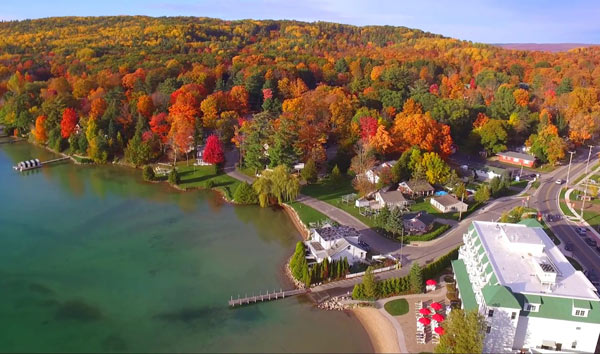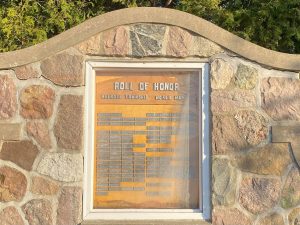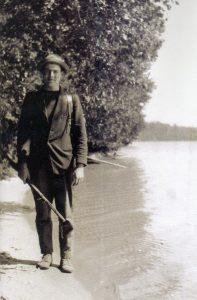What is the best time to view Michigan’s fall colors?
Generally, the annual seasonal show peaks in stages, beginning at the top of the state in the Upper Peninsula, where it gets cooler first. It then moves southward. Peak color is usually found in the U.P. between mid-September and early October; in the northern Lower Peninsula between late September and mid-October; in mid-Michigan from early to mid-October, and in southern Lower Michigan from mid- to late October. Color patterns, however, depend greatly on the weather as well as other factors including lake-effect warming, which delays color changes near Great Lakes and inland water shorelines. In addition, cooler valleys or exposed hills may see color changing faster, so call ahead before you go.
How does weather affect the fall colors?
As the days trend shorter, moving toward autumn, and hours of daylight dwindle, leaves are unable to produce as much chlorophyll. Soft tissue in the leaf stem hardens which reduces nutrients to the leaf, forcing the green color to fade while yellow, orange and red colors emerge. The red, orange and yellow colors seen in leaves during autumn are always there, but large amounts of chlorophyll in the summer months overpower the leave with green color (red and purple color is formed by sugars trapped in the leave).
Conditions which typically favor brilliant autumn leaf color are; a moist summer growing season, followed by warm and dry autumn days, with cool overnight temperatures (no frost or freezing temps). Freezing temperatures at night can cause the soft membrane of the leaf stem to burst, making the stem brittle and allowing the leaf to fall off prematurely. Drought early in the growing season, spring and early summer, can harden parts of the stem early and ultimately force leaves to drop earlier in autumn before full color. Significant fall rains tend to mute colors due to the lack of sunlight which reduces that trees ability to make late season food. Gusty winds and extremely cold morning temperatures will make leaves fall prematurely.
Learn more about the “Science of Fall” through the USDA Forestry Service website: https://www.fs.usda.gov/visit/fall-colors/science-of-fall-colors.
How many species of trees are there and what colors do they turn?
There are nearly 150 different species of trees in Michigan’s 18.6 million acres of forest. Our state boasts a colorful mix of yellows, reds, golds and oranges. Some of the most beautiful colors are displayed by such hardwoods as aspen, maple, birch, sumac and oak. When combined with a background of evergreen forest, the result is one of the best shows in the nation.
What will our fall be like this year?
“Mild days and cool nights are often needed to bring out the brightest colors,” says Matthew Zika of the National Weather Service in Marquette. “Up until the last 10 days [two weeks] or so, we haven’t had a lot of those ideal cool nights. With several recent mornings with lows in the 30s, we’ve seen the color start to progress fairly quickly (especially inland) but it’s lagging behind our typical peak by several days.”
How can I keep track of the most current fall color conditions?
Travel Michigan updates conditions weekly on its website: https://www.michigan.org/article/peak-color-september-30-october-6-2022.
What is the best way to view West Michigan’s fall color show?
There is no single best way to enjoy the fall color display. Michigan travelers have a plethora of ways to enjoy the show, either by car, train, boat, bicycle, hot air balloon rides, at festivals, hiking, on golf courses and luxury resorts, or historic highways. Many of these “old roads” cut through great stands of hardwood and pines and make perfect color tours, and some are state-designated scenic routes.
Are there driving tours already mapped out for my convenience?
West Michigan Tourist Association has dozens of Autumn Color Tours — from 40 miles to 140 miles, worth exploring! Travel Michigan also has an extensive list of “Driving Tours” on its award-winning website, Michigan.org. You can also download the Fall 2022 Pure Michigan Travel Guide magazine, which is loaded with suggestions for traveling throughout both the Lower and Upper Peninsulas.




